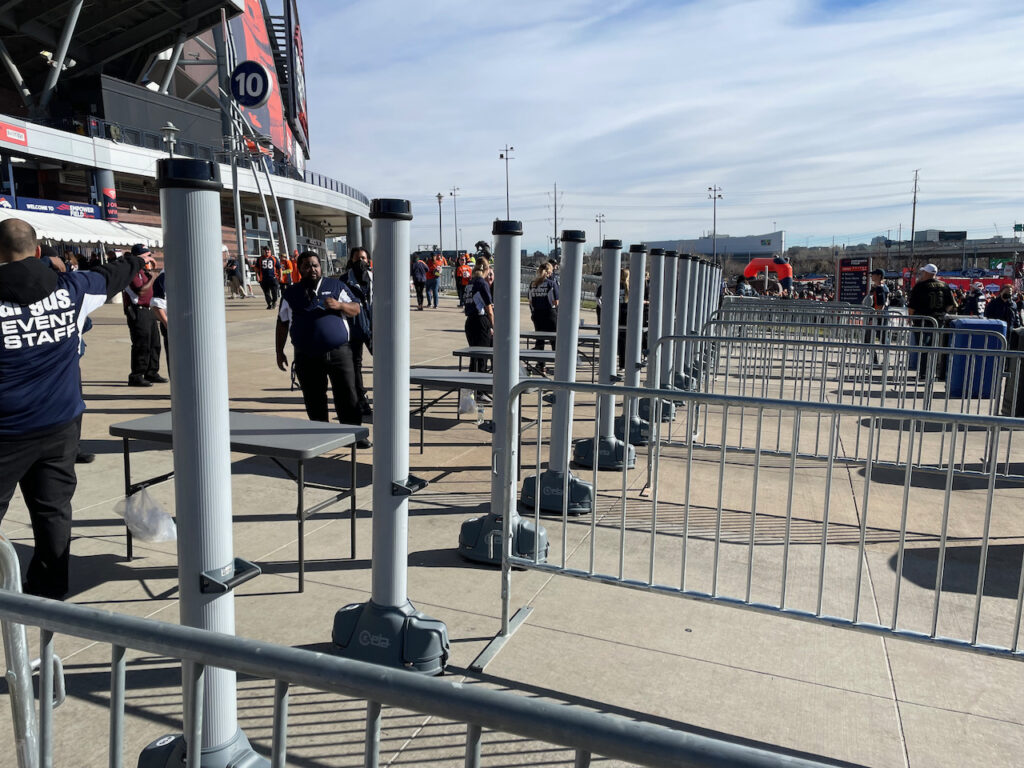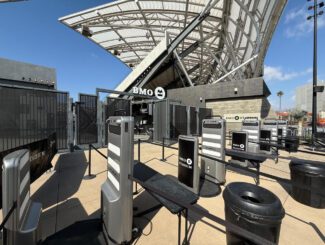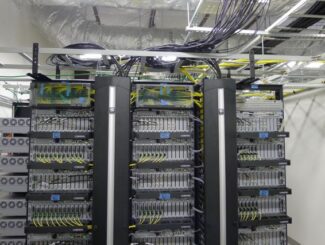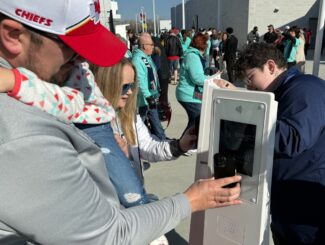
After a year of welcoming full-capacity crowds back to stadiums, it’s apparent that while technology can assist venues in eliminating fan pain points, it’s also clear that sudden shifts to new ways of doing things don’t always go as smoothly as planned.
For this column, we’re going to focus on the process of stadium entry, where we saw some of the biggest gains and also some of the biggest problems in the first full year back from pandemic shutdowns. Most of those revolved around the full-scale shift to all-digital ticketing, which went smoothly in some places and not so smoothly in others.
While every venue is different in its makeup and customs, we have three basic ideas that should help most venues in making their entry procedures a better thing for everybody. In no particular order of importance, the suggestions include: Expanding the physical security perimeter, to improve walk-in flow; adding more technology and process design to keep bottlenecks from occurring; and stepping up fan education and adding incentives for fans to arrive early to trim the last-minute crowding as much as possible.
Expanding the perimeter a basic first step
Some of these ideas are not new — extending the security perimeter beyond the stadium walls, for example, has been a staple of Super Bowl preparations for years now. Some newer stadiums, like SoFi Stadium in Los Angeles and Lower.com Field in Columbus, Ohio, have built in the idea of distanced perimeters into their venue design.
The Denver Broncos were one of the more recent additions to the extended-perimeter club, taking advantage of a natural barrier of sorts that exists in most areas around Empower Field at Mile High, where the actual stadium entry gates sit a bit higher than the surrounding parking lots and walkways. With a little bit of extra fencing the Broncos were able to create a first line of security where they set up wide entryways each with multiple new walk-through weapons detectors from Ceia USA. After fans pass through security, they enter plaza-type areas where they can use stadium Wi-Fi to download tickets if they haven’t done that already, without having to do so while in a line and possibly holding up the process.

After that, fans can then enter via a number of ticketing gates at each entry, where staffers use handheld scanners to verify tickets. From what we saw at a recent Broncos game, the process produces very few lines, with the spaces in between helping fans comfortably through at their own pace.
According to Russ Trainor, VP of IT for the Broncos, the new extended perimeter system has cut entry times down to an average of 2 to 3 minutes, far faster than previous procedures that often involved long lines backing up right at the doors to the stadium. And while the extra distancing is a smart first step, it also is apparent that better technology is also a necessary component for a future-thinking entry system.
Eliminating human contact, speeding up the interactions
Ever since the industry started moving away from punching paper tickets, there have been many efforts to digitize the ticket-verification process, some more successful than others.
While many stadiums seem to have settled on hand-held scanners for ticket verification, those systems can still have daylight or operator issues that cause delays; fotunately a new era of self-scanning pedestals is emerging, with devices from Axess starting to win wide acceptance among stadium IT teams. Unlike some previous platforms that tried to insert their own software in between fans and ticketing operations, the Axess devices connect directly to ticketing platforms, eliminating fan confusion and streamlining operator functionality.
Just this year, we’ve seen Axess pedestals at multiple venues, including Lower.com Field, Climate Pledge Arena, and at Empower Field at Mile High, where they are being tested at the entry to club and premium seating areas. Like some other entry systems there are versions of the Axess pedestal that can operate on battery power and via Wi-Fi, making them extremely flexible for changing security needs.
The other big step forward in entry technologies is in weapons detection, where walk-through systems are quickly gaining favor for their obvious improvements over the old airport-style single-person gates where fans have to take metal items out of their pockets. We’ve seen systems from vendors inlcuding Evolv, Patriot One and Ceia are already in use at multiple venues, from the aforementioned stadiums as well as Wrigley Field in Chicago.
More fan education and incentives needed
What’s instructive about watching fans encounter the new weapons detection systems is how hard it is to shed old behaviors. At Lower.com Field as well as at Empower Field at Mile High multiple fans seemed confused by the ease of the process, with many stopping mid-gate to raise their hands or take things out of their pockets. While most fans learn quickly to simply keep walking, the reality is that even the simplest of new procedures could benefit from more fan education, something it seems venues don’t do enough of.
Ohio State learned that lesson the hard way at the start of this season, when it encountered a perfect storm of sorts. At the first game when 102,000-seat Ohio Stadium tried all-digital ticketing — a sellout matchup with Oregon — a software bug in the stadium’s Aruba Wi-Fi network caused some partial Wi-Fi outages, leading to huge backups as late-arriving fans tried to download their tickets all at the same time, right outside the stadium walls.
The ensuing snafu — which included some fans trying to push their way past security and ticketing — was corrected before the next game, in part by Ohio State putting out informative short videos that illustrated the process and experience fans could expect, with an emphasis on having fans download tickets before arriving at the gate, a problem many venues are still facing.
In this era of pervasive social media consumption, it seems like it would be easy for teams and venues to provide more information for fans about entry procedures, but we’ve seen too few examples of such messaging. More information on processes is also likely to be needed even more going forward, as more venues add Covid vaccination checks to their entry procedures.
What might also help is some more venue incentive for fans to arrive early and get inside, to help eliminate the last-minute crush of fans who have traditionally tailgated until the last possible moment. Some of that behavior is likely caused by the high prices in many venues for food and drink, which from where we sit seems like a slap in the face given the relatively high ticket prices for any type of premium event.
If you’re charging $15 for a non-premium beer and $20+ for a mixed-drink cocktail, you’re basically telling your fans to stay outside the stadium as long as possible. We’re surprised that more venues aren’t following the example set by the Atlanta Falcons and Mercedes-Benz Stadium, where ultra-low prices for concessions staples have actually led to higher per-cap numbers.
Combined, all these ideas can help to produce a new style of stadium entry that is more in tune with the times, which still require social distancing and less human-to-human contact as much as possible. If venues want to keep attracting fans and keep them safe, they should start by making it as easy to get in as possible.










